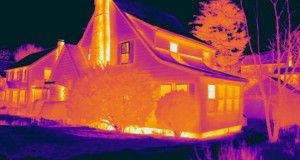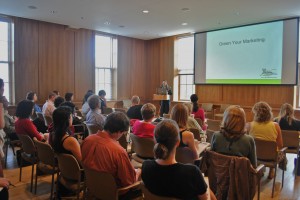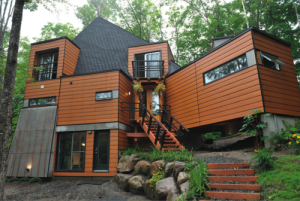 Several Boston/Cambridge groups have collectively organized an open-ended Environmental Film series, the kick-off of which was this past Tuesday, at Cambridge’s Main Library. The second film in the series, Kilowatt Ours, will be shown on July 29th in the same location: Bottom floor (L2), Cambridge Main Library, 449 Broadway, Cambridge, MA 02138-4191 at 6:30pm. Another (yet to be selected) film will be shown on August 19th, so save this date!
Several Boston/Cambridge groups have collectively organized an open-ended Environmental Film series, the kick-off of which was this past Tuesday, at Cambridge’s Main Library. The second film in the series, Kilowatt Ours, will be shown on July 29th in the same location: Bottom floor (L2), Cambridge Main Library, 449 Broadway, Cambridge, MA 02138-4191 at 6:30pm. Another (yet to be selected) film will be shown on August 19th, so save this date!
The first documentary “King Corn” was shown at 6:30 and light refreshments were served afterward.
This film follows two young men who, after finding corn molecules in strands of their hair, trace their genealogical footsteps back to their Iowan homeland and learn that the land their ancestors once farmed is covered in corn. Not just corn, but a variety of corn that can’t even be eaten.
To fully understand today’s agriculture system, the two guys arrange to purchase and register one acre of land, on which they go through all of the expected farming measures to create maximum yield. While their 31,000 seeds are growing into full-sized high-yield cornstock, these gentlemen explore what happens to the starchy corn they are now growing once it leaves their farm. The corn is used several ways, none of them direct human consumption. Cows on beef farms are fed with it, some of it is exported or used for ethanol, and a vast amount of it goes into becoming a sweetener—high fructose corn syrup. They go on to find that the corn in their hair came not necessarily (and certainly not solely) from eating actual corn, but from everything else they were consuming, including products like beef, bread, soda, chicken, french fries, and spaghetti sauces. This is a timely film that takes a hard look at the farming industry in the US today, the use of our bread basket for something we can’t eat, the beef industry, and the ubiquity of corn syrup in today’s society, among other significant topics.
Some eye-opening facts mentioned in this film:
- The type of corn grown all over Iowa today is bred to be starchy, and to tolerate close planting- resulting in almost 10,000 pounds of corn being produced on each acre, and none of it edible.
- More than half of the corn crop goes into feed for animals, mainly cows (i.e. beef farms).
From the movie:
- The meat that we eat in this day and age is produced in a feed lot.
- It’s grain-fed meat, and we produce a characteristically obese animal, animals whose muscle tissue looks more like fat tissue than it does lean meat in wild animals.
- …if you look at a T-bone steak from a grain-fed cow, it may have as much as 9 grams of saturated fat; whereas a comparable steak from a grass-fed animal would have 1.3 grams of saturated fat.
- Meat cows that are not butchered within two years on this diet will die from the acidosis the corn causes.
- 70% of the antiobiotics used in the U.S. are those given to livestock- a large portion of which are for beef to fight off the acidosis.
- The corn a farmer produces cannot sustain him- he will always come out with a deficit when comparing produce value to the cost of production. The reason they stay afloat (if they do) is because of government subsidies.
- The over-production of corn in the U.S. is looked on by some as a plus- an asset. The roots of this lie with the history of farming, and the portion of income it used to take to feed a family.
- Corn syrup is in everything from kool-aid (as expected) to spaghetti sauces and breads (for “browning qualities”–less expected). [Challenge yourself to find items in your home that do NOT have corn syrup- you will be surprised- only two portions of our after-film refreshments did not have corn syrup!]
As you may have grasped, I highly recommend seeing this documentary, and sharing it with everyone you know. The film is not only highly informative in an easy to comprehend way, but it has got a strong vein of humor woven throughout the eye-opening footage. Here’s the trailer:




 Thanks to Emily Kanter at the
Thanks to Emily Kanter at the 



